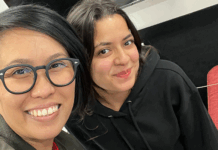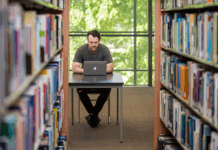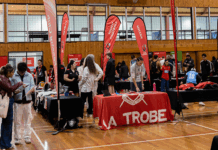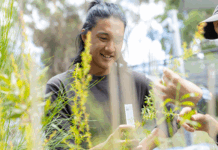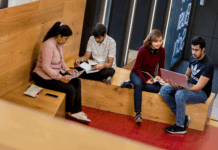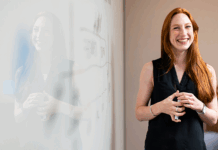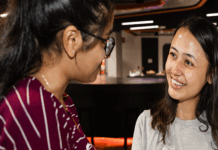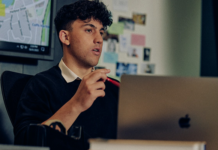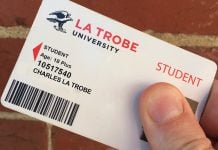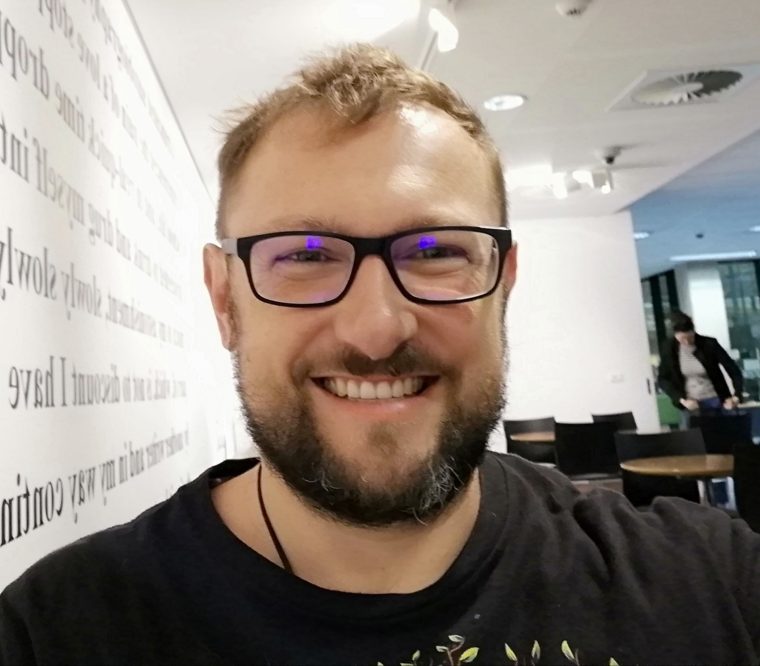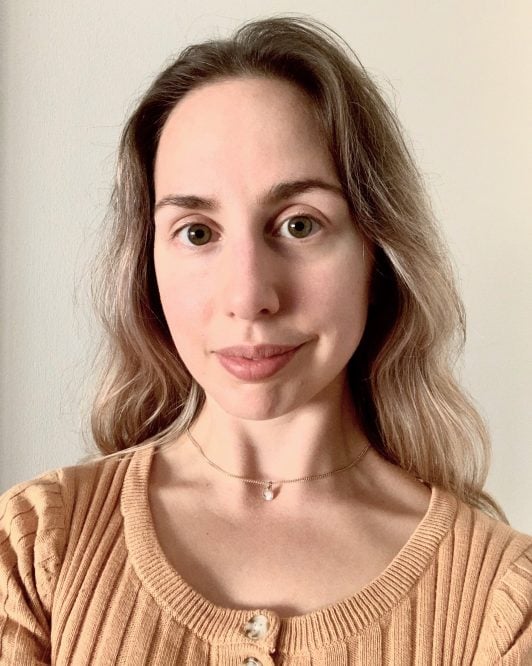Written by Tenzin Fox, a Peer Learning Advisor at La Trobe University.
Neurodiversity, like many things that deviate from the norm, is best understood through the lived experiences of those that fall under its vast categorical umbrella. Until recently, neurodivergent people have struggled to attain a voice, both in public and private settings. Unfortunately, many mainstream portrayals of neurodivergent people are written by the neurotypical, and rarely reflect reality.
And how could they? The neurodiverse community is, as its name suggests, diverse. It is not a linear spectrum where people have either ADHD, Aspergers, or Autism. It is a rich, evolving, multilayered tapestry, one which we are only beginning to understand, and one which we may never fully comprehend. However, the best place to start is to ask those who find themselves somewhere on that tapestry, and that is exactly what we have done in this article.
We have reached out to three neurodivergent members of the La Trobe community; two researchers, Beth Radulski and Dr Ben Habib, and one student who wished to remain anonymous, and have asked them a series of short questions which they could respond to however they liked. Here are their answers:

Dr Ben Habib 
Beth Radulski
What made you start researching/investigating this topic? Why is it important to you?
Beth Radulski: I began researching neurodiversity because, after completing my degree in Sociology and Gender, Sexuality, and Diversity Studies, I became curious about how these disciplinary approaches could help us to better conceptualise and understand neurodiversity as a social inequality issue. As an Autistic person, it is important to me that these perspectives are brought into the field, as without an understanding of how dominant discourses and culture can shape the lived experience of minority groups, there is a risk of excluding certain groups from society on the basis of biological or medical deficits, when in fact, many of these perceived disadvantages are socially constructed through social exclusion, stigma, and marginality, rather than inherent functionality. We’ve seen these broad patterns of inequality occur in several contexts throughout history (gender, sexuality, race, disability, and so forth), and I think it is time to explore them in the context of neurodiversity.
Ben Habib: I spent the better part of twenty years, my entire adult life, trying to understand why I had clinical anxiety, exploring all kinds of counselling, therapies and healing practices. But it was at a neurodiversity workshop run by my LTU colleague Beth Radulski where I first realised that my anxiety could be a symptom of Autism.
How has this area of discussion evolved while you’ve been looking at it? Where would you like it to go?
Beth Radulski: I began researching neurodiversity around 2018, and there have been seismic shifts in the field throughout the past three to four years. There is an increasing focus on prioritising Autistic voices in research, which is great to see, and psychological literature on Autism is only just beginning to identify social inequality as a key factor in some areas – for example, in the field of Autistic masking. Going forward, I would like to see the social sciences and psychology become increasingly more intertwined with one another, as I think that a multi-disciplinary approach, and the lessons and frameworks we’ve acquired in fields like queer theory, critical race theory, critical disability studies, and so forth, will continue to transform our understandings of neurodiversity (and its intersectionality), ultimately improving quality of life for the Autistic community.
Ben Habib: I’ve been on a rapid learning curve and I’m still relatively new to the neurodiversity movement. However, I see advocacy around making all social and workplace settings safe and accessible for neurodivergent people. Most places are hostile environments for neurodivergent people, the university included. Safety and accessibility need to be embedded practice, not tick-box add-ons.
What is something that you wish the wider public knew about neurodiversity?
Beth Radulski: Neurodiversity is not something a person ‘has’ or ‘is’. In the same way that society is culturally diverse, society is neurodiverse—and within a neurodiverse society, some neurotypes become social identity groupings that experience marginality, while others experience privilege. Therefore, it is our responsibility as a society to improve our culture to be more accepting and celebrating of neurodiversity, and more accountable in acknowledging the crucial role that society must play in addressing neurotypical privilege, and fostering equity, representation, and inclusion for what I refer to as neuro-minority groups (Autism, ADHD, Dyslexia, etc.).
Ben Habib: That every person’s experience of the world is unique, shaped by our own unique neurology. This diversity is an asset that should be celebrated and accommodated, not something that we should feel compelled to mask for our own safety. Masking, consciously or unconsciously, takes an enormous personal toll.
Are there any myths about being neurodivergent that you would like to dispel?
Beth Radulski: There is a common myth that for an Autistic person to appear ‘normal’ to the external world equates to them being ‘high-functioning’. However, many Autistic people must engage in processes referred to as ‘masking’ and ‘camouflaging’ in order to conceal their Autistic traits and fit in with neurotypical society. Research shows that masking lowers quality of life, mental health, and overall wellbeing—in other words, it decreases overall functionality. There are many ways to be ‘functional’ that do not rely on social perceptions alone. As an unmasked Autistic person, the times I am most likely to be read as ‘low-functioning’ are in fact often the times that I am the most functional internally. We need to move away from using functioning labels to describe Autism: functionality is not a static biological trait—‘functionality’ as a measure of social participation and economic productivity is hugely reliant upon accessibility, inclusion, and social equity.
Ben Habib: Your external perception of us is not our lived reality. If you want to understand our reality, you need to listen.
The questions given to the student differed from those provided to the researchers, given the different contexts of their experiences.
From your experience, what are some of the challenges faced by neurodivergent students that the neurotypical community might not be aware of?
Student: I would consider a lack of awareness about the cognitive profile (that can be) associated with neurodiversity to be a challenge. Things like slower processing speeds can be something that neurodiverse students often struggle with, so even though that person may be quite intelligent, everyday aspects of university life, such as taking notes quickly enough in lectures or coming up with answers to questions in tutorials fast enough are things that they might really struggle with, which can make participating in class difficult. I think that often those sorts of things aren’t really acknowledged by people in the neurotypical community because the focus instead tends to be on how neurodiversity affects a person’s communication skills.
How can the neurotypical community show support for the neurodivergent community, on both an individual and institutional level?
Student: On an individual level, whether you are a fellow student or a university lecturer, just allowing a little more time for people to answer questions and/or recognising that not every student in a class will process information at the same rate is a great start. Those extra few seconds may be just enough to allow a neurodiverse student in your class to speak up, and what they contribute will no doubt be valuable. On an institutional level, it is great to see that a lot is already being done to help neurodiverse students adjust to university life. Seemingly small accommodations, such as extra time to complete tasks and assignments, and a note-taker for lectures that can’t be recorded, go a long way in enabling neurodiverse students to perform at their best.
Are there any myths about living with neurodiversity that you would like to dispel?
Student: I think society has a greater awareness now of what neurodiversity actually means and represents and hopefully lots of myths about neurodiversity have already been debunked. I will point out that there is no universal look, behaviour or trait that defines a neurodiverse person. Every neurodiverse individual is just as unique as every neurotypical individual, and we all have our different strengths and weaknesses. Nobody, neurodiverse or otherwise, should feel the need to change who they are just to fit into societies’ definition of normal.
Resources
Thank you all for reading. I hope reading these perspectives has helped to broaden your perspective on the issue. Below we have included a list of helpful resources that La Trobe provides for neurodivergent people:
The Accessibility Hub provides a wide range of services to assist neurodivergent students, from physical access maps, learning access plans, and more.
The Safer Community service offers support to those experiencing concerning, threatening, inappropriate or uncomfortable behaviour.
Counselling Services are free for students at La Trobe and are available 9am – 5pm Monday to Friday.


